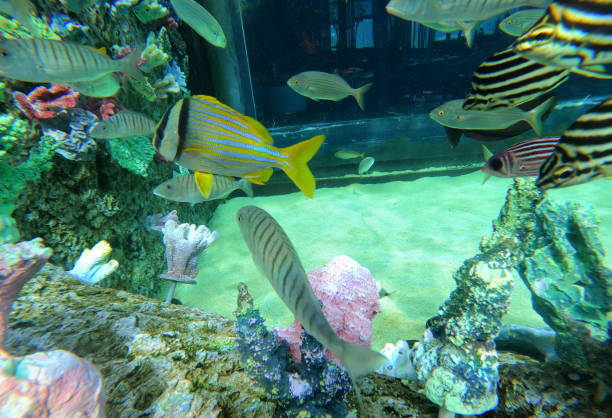A guide to better fish care:
Maintaining a Healthy Aquarium and Popular Fish Choices:
Fish keeping:
Fish keeping is a relaxing and rewarding hobby that brings a slice of underwater life into your home. Whether you’re a beginner or an experienced aquarist, maintaining a healthy aquarium involves understanding the needs of your fish, the importance of water quality, and the best practices for tank setup. This guide will provide essential fish-keeping tips, highlight ways to maintain a healthy aquarium, and explore some of the most popular fish species.
1. Essential Fish Keeping Tips:
Starting a fish tank requires careful planning and ongoing care. Here are some fundamental tips for successful fish keeping:
- Research Before Buying: Understanding the specific needs of the fish species you wish to keep is crucial. Research their tank size requirements, dietary needs, compatibility with other fish, and ideal water conditions.
- Choose the Right Tank Size: Bigger is often better when it comes to aquariums, as larger tanks are more stable and provide ample space for fish to swim. Beginners are often recommended to start with at least a 20-gallon tank.
- Avoid Overcrowding: Overcrowding can lead to stress, increased waste, and poor water quality, all of which are harmful to fish. Follow the general rule of one inch of fish per gallon of water as a guideline, but consider the specific needs of your fish species.
- Cycle the Tank Before Adding Fish: A crucial step in setting up an aquarium is the nitrogen cycle, which establishes beneficial bacteria that break down waste. Cycling the tank before adding fish helps prevent harmful spikes in ammonia and nitrite levels.
2. Maintaining a Healthy Aquarium:
A healthy aquarium requires consistent maintenance and monitoring. Here are key steps to ensure your aquatic environment remains in optimal condition:
- Regular Water Changes: Performing regular water changes, about 10-20% weekly, helps maintain water quality by removing waste and replenishing essential minerals. Use a gravel vacuum to clean the substrate and remove debris.
- Monitor Water Parameters: Use a water testing kit to regularly check parameters like pH, ammonia, nitrite, and nitrate levels. Keeping these within the recommended range for your fish species is vital for their health.
- Proper Filtration: A good filter is essential for keeping the water clean and oxygenated. Choose a filter that is appropriate for your tank size and fish load. Clean the filter regularly to ensure it functions properly without becoming clogged.
- Control Algae Growth: Algae growth is natural but can become problematic if left unchecked. Reduce algae by controlling light exposure, avoiding overfeeding, and introducing algae-eating fish or snails if appropriate.
- Feed a Balanced Diet: Overfeeding is a common mistake that can lead to poor water quality and health issues in fish. Feed your fish once or twice a day with only as much food as they can consume in a few minutes. Offer a varied diet that matches the dietary needs of your fish, including pellets, flakes, and occasional live or frozen foods.
3. Popular Fish for Home Aquariums:
Choosing the right fish for your aquarium is key to a successful fish-keeping experience. Here are some of the most popular and beginner-friendly fish species:
- Betta Fish (Betta splendens): Known for their vibrant colors and flowing fins, bettas are a popular choice for small tanks. They require a minimum of 5 gallons, warm water, and a gentle filter to thrive.
- Neon Tetras (Paracheirodon innesi): Neon tetras are small, colorful schooling fish that do well in community tanks. They prefer slightly acidic, soft water and a planted tank environment.
- Guppies (Poecilia reticulata): Guppies are hardy, easy-to-care-for fish that come in a variety of colors and patterns. They are prolific breeders, so it’s important to manage their population or keep only one gender.
- Goldfish (Carassius auratus): Goldfish are a classic choice but require more care than many realize. They need a spacious tank (20 gallons for one goldfish), robust filtration, and a diet that prevents constipation.
- Corydoras Catfish (Corydoras spp.): Corydoras are peaceful bottom dwellers that help keep the tank clean by scavenging for leftover food. They do best in groups and thrive in tanks with soft substrate to protect their sensitive barbels.
- Angelfish (Pterophyllum scalare): Angelfish are a beautiful addition to larger community tanks. They require warm water, a tall tank to accommodate their height, and peaceful tank mates.
Maintaining a healthy aquarium and caring for fish can be a deeply fulfilling hobby that brings a touch of nature into your home. By understanding the basics of fish care, maintaining proper water quality, and choosing compatible fish species, you can create a thriving aquatic environment. Regular maintenance, attention to detail, and a commitment to learning about your fish’s needs are the keys to successful fish keeping. Use these tips and insights to keep your aquarium vibrant and your fish healthy, ensuring a beautiful and harmonious underwater world.
